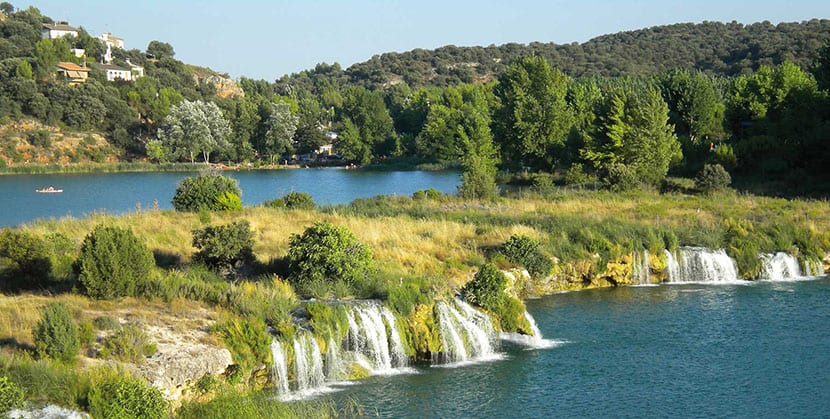
Un wetland In general, it is a fairly flat terrain that is usually flooded so frequently that the floor becomes saturated, the oxygen is lost and an ecosystem is thus formed that is halfway between the aquatic and terrestrial.
This is exactly the Lagunas de Ruidera Natural Park, the most beautiful in the Iberian Peninsula. It is in the community of Castilla la Mancha and it is such a naturally beautiful site that you cannot miss it. And here we leave you everything you need to know to do it.
The Ruidera Lagoons

In total there are 16 river lagoons, all in the valley that forms on one side the Pinilla River And on the other the Alarconcillo creek. Both arms of water along their route are separated and joined by earth barriers and the difference in height of both makes these unions characterized by waterfalls, waterfalls, other streams and the occasional lagoon.
The characteristics of the terrain, easy to collapse due to its karst nature, are responsible for these "lagoons" that are connected by waterfalls or streams rising and falling, forming a tiered landscape of greens and blues. With few exceptions, these water bodies are small and shallow and if we count them starting with the artificial reservoir of Peñarroya we have about 16 lagoons that occupy a total of around 672 hectáreas.

In this numerous set of lagoons there are low, medium and high ones. The low lagoons They are rather small, they do not usually have rapids or waterfalls or cliffs on the sides, their beds are low and they are quite muddy.
For their part, the middle gaps They are at the confluence of both rivers, the Pinilla and the Alarconcillo. They have vegetation on the margins, waterfalls, rapids and, as they are deeper, their waters acquire the most beautiful shades of blue and green. For example, the Laguna Redondilla, Lengua, San Pedro or del Rey.
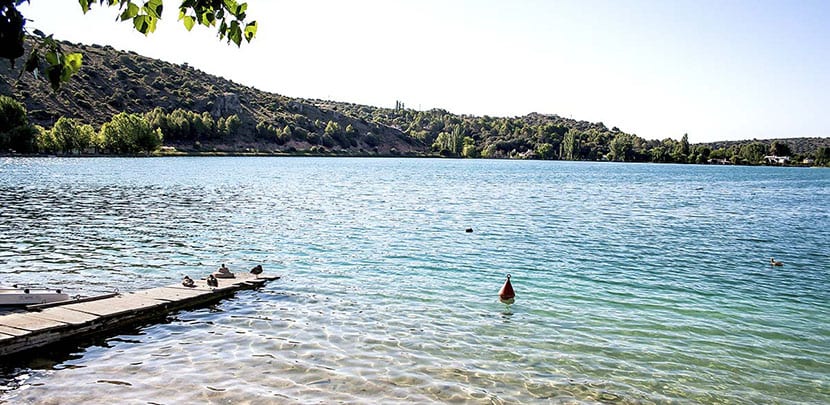
Finally, the high lagoons They are the ones on the Pinilla slope, on the left side. They turn out to be the perfect habitat for many waterfowl, mammals and amphibians. It is, for example, the Laguna Blanca, La Tinaja or the Council.
Thus, the Natural Park of the Lagunas de Ruidera is a typical example of lakes that are formed by accumulation of tuff and its beauty, a postcard will not go unnoticed.
Visit the Lagunas de Ruidera Natural Park
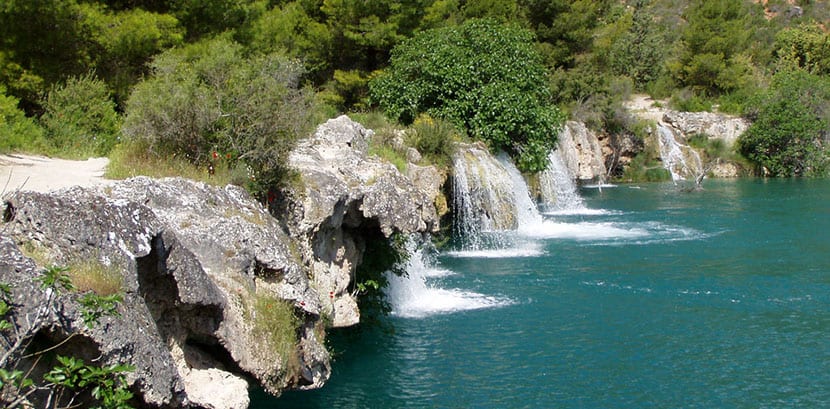
The park is in the Upper Valley of the Guadiana River, or Río Pinilla, and It is the natural limit of Ciudad Real and Albacete. If you are in Madrid you can approach Manzaneres by the N-IV and then circulate by the N-430. If you are in Albacete directly from the N-430.
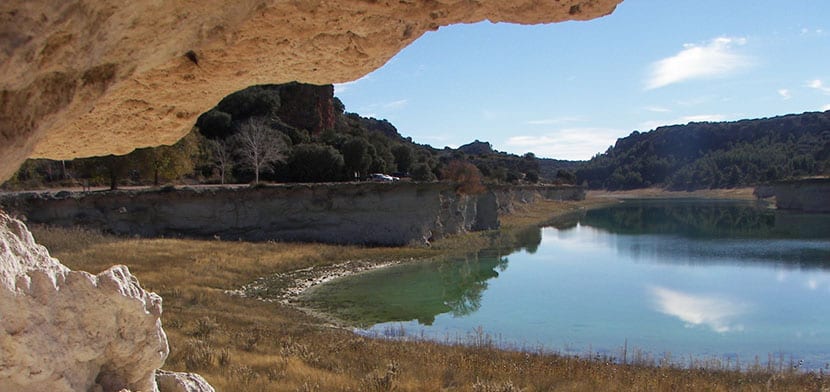
The area is Mediterranean climate and it rains little so you can really visit the park all year round. maybe yeah the best times are the autumn and winter because in winter it is cool without being icy. And if you go in summer, then you have to wear a swimsuit because you don't have the opportunity to splash here every day. Write down the bathing areas: Laguna del Rey, Laguna Colgada, Laguna Salvadora, Redondilla and San Pedro.
The park offers the visitor different tourist routes:
- Route of the White Lagoon: travel eight kilometers in one direction and follow the route that borders the lagoons. It does the first two kilometers bordering the Conceja Lagoon and on its way it touches the White Lagoon and the Ruidera Lagoon. If you like the bike it is perfect because it is quite flat.
- Foot path in the middle: It is a circular route of six kilometers in total that starts from the village of San Pedro, borders the San Pedra lagoon and reaches the Los Almorchones hill. From up here the view is stupendous. To do on foot it is ideal.
- Peñarroya castle route: it is a route that goes 21 kilometers. Part of the Ruidera cemetery, it passes through the Cueva Morenilla, Coladilla and Cenagosa lagoons, the Peñarroya reservoir and its dam and also its castle, located next to it.
- Rochafrida Castle Path: part of the village of San Pedro, you arrive at the ruins of the Castle of Rochafrida, which you can visit. It travels a total of 4.3 kilometers and the landscapes are beautiful.
- Interpretive Path of the Castle of Peñarroya: part of the local castle and allows you to learn about that site, the local fauna and flora. It is a short path, less than two kilometers long, very suitable for walking.
- Montesinos cave path: it is a road of only 1 kilometer. It starts from the village of San Pedro, climbs the Almagra slope and reaches the entrance to the Cueva de Montesinos, which is where the beginning of Don Quixote's adventures takes place.
- Path of the Camino de la Casa del Cerro:It starts from the Ruidera cemetery and passes by the banks of the Colgada y el Rey lagoon until it reaches the Fauna refuge. travel 2.7 kilometers.
These are the tourist routes to do on foot, by car or by bike in the park. We must not forget that the tuff barriers between the lagoons are the pearl of the place and that is why they cannot be crossed on foot, whether or not they have water.
Finally, in the area and as you will have seen in the brief description of these routes you will be able to visit other interesting places: The Castle of Peñarroya thirteenth century with its hermitage, the Church of Santa María Magdalena in Ossa de Montielgothic the Alhambra Castle and Ethnographic Museum At the same place. It all adds up.
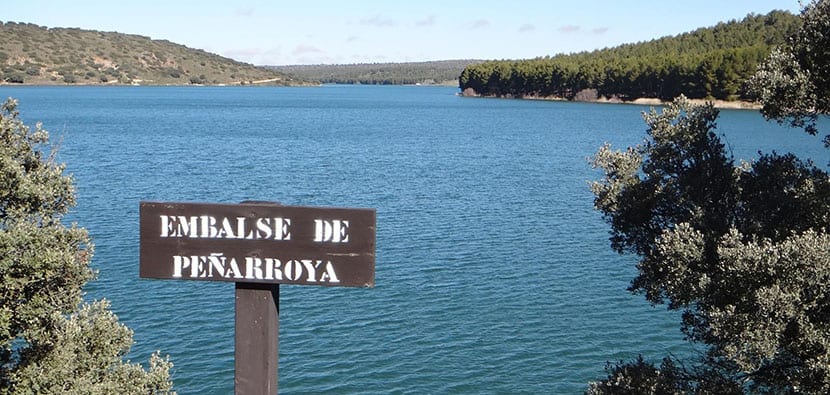
If you are one of those who visit visitor centers to obtain information and brochures then you will find one in Ruidera and the other in Ossa de Montiel. One last piece of information, the opening hours of the park throughout this 2018: there are days when it opens from 10 am to 2 pm and others do it with a split schedule, from 10 am to 2 pm and from 4 to 7 pm. You can visit the park on your own or sign up for one of the guided tours on foot or in 4x4.
In the case of opting for the 4 × 4, you must make a reservation and if you use your own car you must reserve the visit anyway. If you walk on foot, the routes are well signposted and there is always the option of having the expert help of a guide. Let's say there is something for everyone. You dare?